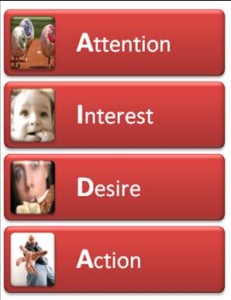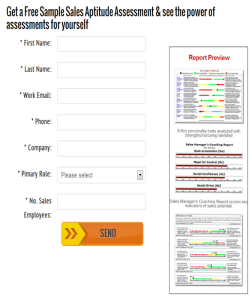 What makes a website an effective selling tool? Why do some websites perform well at generating leads while others don’t? There are many answers to these questions, and this article focuses on how the content in your website makes a difference.
What makes a website an effective selling tool? Why do some websites perform well at generating leads while others don’t? There are many answers to these questions, and this article focuses on how the content in your website makes a difference.
Before diving into how content can makes a huge difference, here are some other questions to ask about your website…
- Can it be found in the search engines?
- When someone comes to it do they see an outdated website?
- Is the website mobile-responsive and works well on mobile devices?
- Does it meet the “credibility test”?
- Does the content create a desire on the part of the customer to take action?
On the topic of content in your website, there are 6 steps to getting it right. You should think about who your customer is and what is important to him, then develop content that walks him through the AIDA cycle – Attention, Interest, Desire and Action.
6 steps to planning and developing content for your website
Identify the persona of your target market
Ask yourself – who is my typical buyer? What is important to him? How does he make decisions? What isn’t important to him? Sometimes this takes research in the form of surveys, focus groups, advisory groups and the like. Come up with the right answers and you have the foundation for awesome website content.
What is your customer’s problem?
People buy for only two reasons – gain or pain. They either want to GAIN something to make their lives better, or they want to avoid something unpleasant from happening - PAIN. So, once you understand who your customer is and what is important to him, now ask yourself
- What is my customer looking to gain?, and/or
- What is my customer’s problem for which he is seeking a solution?
When you identify the answers to these questions, you can use this information to ensure your website content addresses the “gain” and “pain” points.
Get their ATTENTION with a good headline
The headline goes at the top of the web-page. Let’s say you are looking for information about how to improve your selling success and find a web-page about selling skills. Which of the following two headlines will get your attention and motivate you to read more information?
- “Selling Skills”
- “Increase Your Close Ratio by 20% - Guaranteed”
Most people will say the second one. Why? Because that one states a solution and likely addresses the reason the customer is coming to a web-page in the first place.
Give a little more to generate INTEREST
You’ve grabbed attention with a good headline and now the customer is motivated to read more. So, give them more to generate interest. This typically comes in the form of a sub-headline, or 1 or 2 sentences that provide more information about how the service addresses the customer’s “pain” or “gain” points. This is often called “teaser text”. Here’s an example that builds on the previous headline – “Increase Your Close Ratio by 20% - Guaranteed”
“Our customers have reported an increase in their close ratio of at least 20% within 3 months after completing our selling skills courses. Learn more about how it works.”
We’ve grabbed their attention with a good headline and now we’ve given a little more evidence (“teaser text”) that will likely peak interest to learn more. At this point, between the headline and the two sentences, we only have 36 words, which the typical person can consume in about 10 seconds.
Create the DESIRE to take action
With our strong headline and “teaser text”, we’ve got the customer wanting to learn more. Now share some details. This is where it gets tricky. Go back to what is important to your customer and how he makes decisions as this will determine what features you communicate. You want to communicate the features that make a difference to your customer and are part of his decision making process, not the ones you think are important. Here’s an example of stating some features relative to selling skills
- Extensive time is applied to the 3 most difficult selling skills (closing skills, asking the right questions, and researching your buyer), and our unique skills development method creates real change in how these skills are implemented in live selling
- Videotaped role plays are used extensively in the training classes, which dramatically increases behavior changes and makes it easy to translate classroom learning to the real world
- Post-classroom follow up coaching sessions are used to evaluate real-life selling situations and reinforce the critical selling skills that ultimately result in a 20% improvement in close ratio
Each of the statements includes a “feature” and each statement includes how that “feature” produces a “benefit” to the customer. At this point we’ve asked the customer to read 133 words, which a typical person can get through in about 40 seconds.
Tell them how to take ACTION
You’ve got their ATTENTION with a good headline, have generated some INTEREST with the “teaser text”, and you’ve created a DESIRE by articulating the features of your program that produce the benefits your customer is seeking. Now you need to tell them what to do – and that’s the ACTION part.
Don’t leave it up to the customer to figure out next steps – tell them how to take the next step. This final step is the “call-to-action” and is typically delivered on a website by some kind of graphic image – here’s an example
Making your website an effective selling tool is comprised of many things including having the right content that appeals to your customers. Understanding your customer better about what is and isn’t important to him, and then walking your customer through the ATTENTION – INTEREST – DESIRE – ACTION cycle, will make your website a lead producing asset for your business.






Agree, disagree, or just have something to add?
Leave a comment below.